Common Types of Spiders in North Carolina
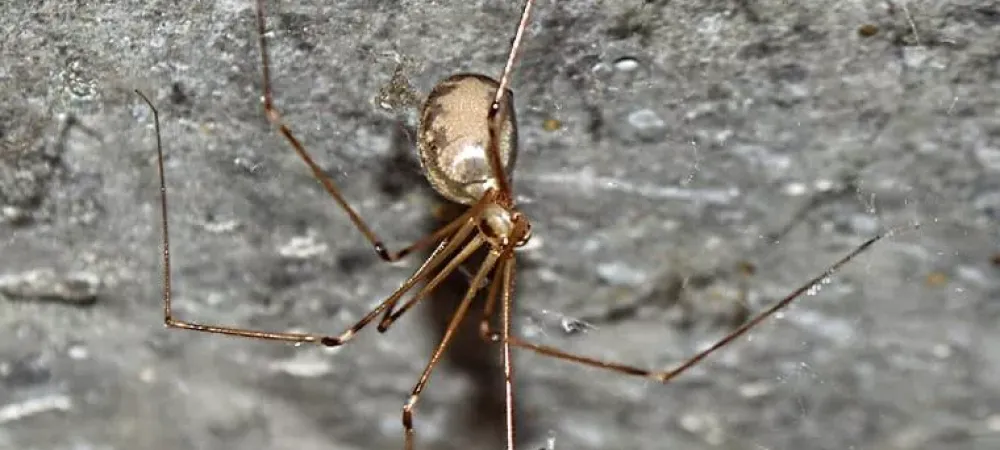
Due to its warm climate, North Carolina is home to a variety of pests, including spiders. While some of these spiders are considered venoms (spiders are not poisonous, as they inject their venom), most spiders are actually completely harmless, beneficial insects that are an important part of the ecosystem. But that still doesn't mean you want to find them in your home.
The most common spiders in North Carolina include:
- The House Spider
- The Cellar Spider
- The Orb Weaver Spider
- The Yellow Sac Spider
- The Trapdoor Spider
- The Black Widow Spider
- The Brown Recluse Spider
- The Wolf Spider
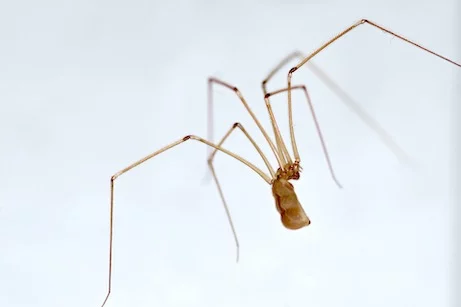
House Spider
Size: Less than 1/4 of an inch
Coloration: Brown or gray, with some brown or white spotting on the abdomen
The common house spider is a species of spider that can be found in many homes across North America. These spiders are not considered to be dangerous to humans, but they can sometimes bite if they feel threatened. House spiders usually build their webs in the corners of rooms or in other dark places. These spiders typically eat insects that become caught in their webs.
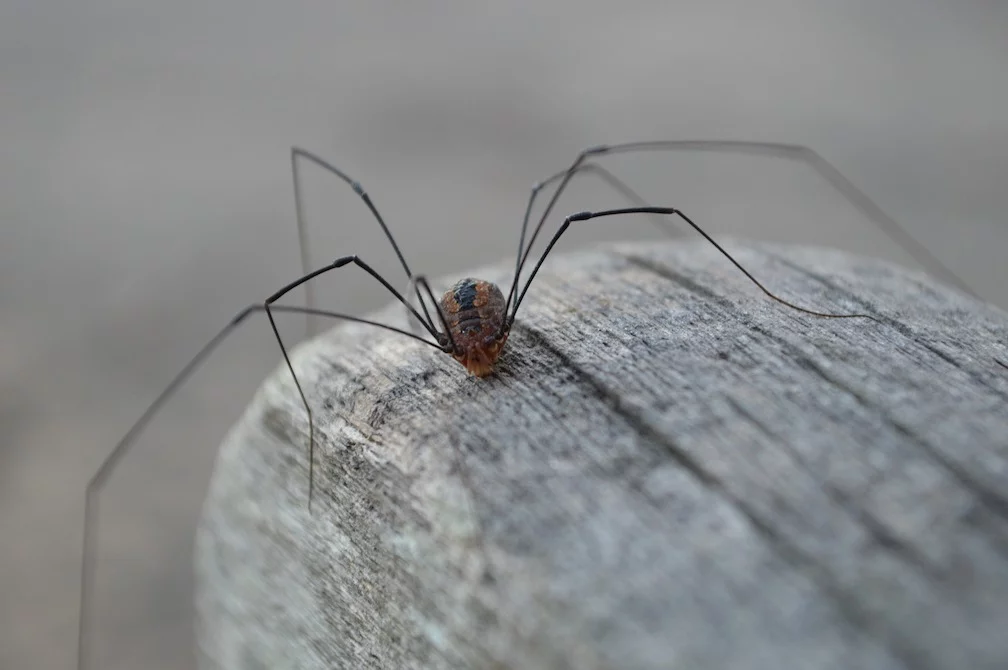
Cellar Spider
Size: The body is about 1/4 inch long, while the legs extend another 2 inches
Coloration: Gray, pale yellow, or light brown
Cellar spiders, also known as Daddy Long Legs, are long-legged spiders that typically have dark or light brown bodies with pale markings. They are often found in cellars, garages, and other dark, secluded places. These spiders are not aggressive and rarely bite humans, but their bites can be painful. Cellar spiders are not poisonous to humans, but their bites can cause local swelling and irritation.
Cellar spiders are generally harmless to humans, but their bites can cause local swelling and irritation. If you are bitten by a cellar spider, wash the area with soap and water and apply an antiseptic cream or ointment if necessary. If you experience any allergic reactions or other serious symptoms after a cellar spider bite, seek medical attention immediately.
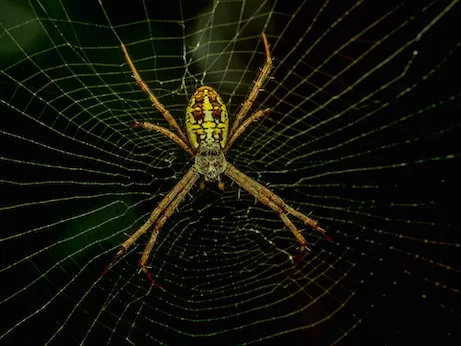
Orb Weaver Spider
Size: Female orb weavers can be between 2 to 6 inches long, while males are only 1/2 to 2 inches long
Coloration: Black or gray with bright yellow or orange markings along the back
The Orb WeaverSpider is a member of the Araneidae family of spiders. They are also commonly referred to as Garden Spiders or Corn Spiders. These spiders are found in most areas of the world and vary in size and coloration. The Orb WeaverSpider is notable for its spherical webs which they use to capture prey.
While most Orb Weaver Spiders are harmless to humans, there are a few species that can deliver a painful bite if they feel threatened. However, these bites are generally not considered to be dangerous or life-threatening. If you do happen to get bitten by one of these spiders, it is important to seek medical attention just to be on the safe side.
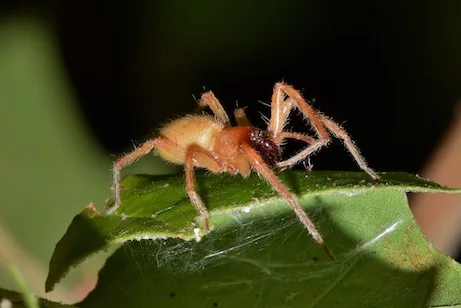
Yellow Sac Spider
Size: About 1/4 inches in body size
Coloration: Pale greenish, tan, or straw-colored bodies with a faint, dark strip running along the top of their abdomen
The yellow sac spider is a type of arachnid that can be found in various parts of the world. These spiders are known for their ability to spin webs and for their venomous bites. While the venom of a yellow sac spider is not lethal to humans, it can cause serious medical problems if left untreated. Symptoms of a yellow sac spider bite include swelling, redness, and pain at the site of the bite. In some cases, victims may also experience nausea, vomiting, and dizziness. If you believe you have been bitten by a yellow sac spider, it is important to seek medical attention immediately. Treatment typically involves the administration of antivenom and pain relief medication. In some cases, hospitalization may be necessary.
Trapdoor Spider
Size: 1 to 1.5 inches in length
Coloration: Range from yellowish-brown to reddish-brown or black
The trapdoor spider is a type of spider that gets its name from the fact that it often builds traps door out of webbing and debris in order to catch prey. These spiders are usually found in temperate climates and prefer to live in dry, open habitats such as deserts, grasslands, and scrublands.
Trapdoor spiders are generally nocturnal hunters. During the day, they will stay hidden inside their burrows which they line with silk. At night, they will emerge from their burrows in search of food. Their diet consists mostly of small insects such as crickets and beetles.
Trapdoor spiders are relatively harmless to humans and are not considered to be a threat. However, their bites can cause mild swelling and irritation. If you are bitten by a trapdoor spider, it is important to seek medical attention immediately as their bites can become infected if not treated properly.
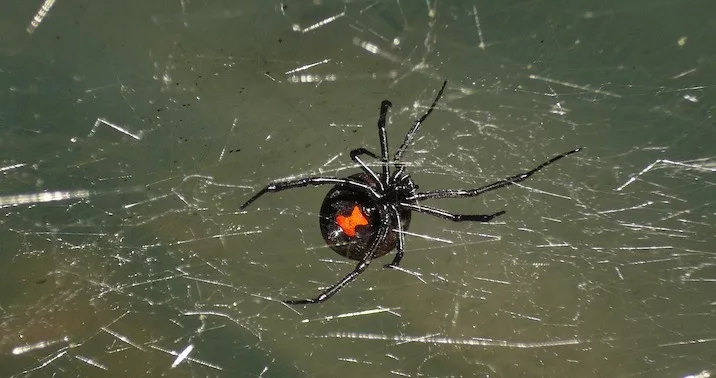
Black Widow Spider
Size: Approximately 1.5 inches
Coloration: Female spiders have shiny black bodies with a red-orange hourglass pattern on their abdomen, while males are brown or gray and have small, red spots on the abdomen.
The black widow is the most common type of venomous spider in North Carolina. Black widows are small, black spiders with a red hourglass shape on their abdomens. These spiders are usually found in dark places, such as basements and garages. They can also be found outdoors in woodpiles or sheds. Black widows are not aggressive, but they will bite if they feel threatened. A black widow bite can cause severe pain, swelling, and muscle cramps. In some cases, it can also cause nausea, vomiting, and difficulty breathing. If you are bitten by a black widow, seek medical attention immediately.
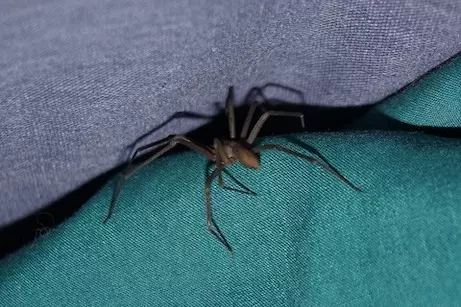
Brown Recluse Spider
Size: About 1/4 to 1/2 inches in length
Coloration: Tan to dark brown with a darker fiddle-shaped marking on their abdomen
Brown recluse spiders are another type of venomous spider that is found in North Carolina. These spiders are brown with a dark brown violin shape on their backs. They are usually found in dark places, such as closets and attics. Brown recluse spiders are not aggressive, but they will bite if they feel threatened. A brown recluse bite can cause severe pain and inflammation. In some cases, it can also cause necrosis (death of tissue). If you are bitten by a brown recluse, seek medical attention immediately.
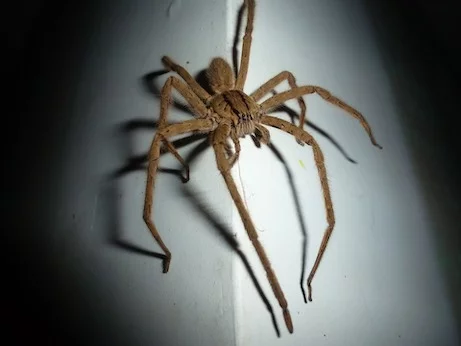
Wolf Spider
Size: Between 1/2 to 2 inches in length
Coloration: Brown or black with subtle red, brown, yellow, or tan marks
Wolf spiders are large and hairy, and they can be up to 2 inches in length. They are brown or black in color, and they have a row of three eyes down the middle of their head. Wolf spiders are found in wooded areas, and they hunt for their food at night. They are not considered to be dangerous to humans, but their bites can be painful.
FAQ About Spiders in NC
Here are some questions our experienced exterminators often get about spiders in North Carolina:
What Is A Spider?
A spider is an arachnid that preys on insects by spinning webs. Spiders are found in every corner of the world and come in a variety of shapes and sizes. Some spiders, such as the black widow, are venomous and can be dangerous to humans. Most spiders, however, are not harmful to humans and can actually be beneficial because they help control insect populations.
What Is The Largest Type of Spider in North Carolina?
The largest type of spider in North Carolina is the wolf spider, which can be anywhere from 1/2 to 2 inches in length.
Venomous Spiders in North Carolina
There are several species of venomous spiders in North Carolina, including the black widow, the yellow sac spider, and the brown recluse. These spiders can cause serious health problems, and even death, if not treated immediately. If you suspect that you have been bitten by a venomous spider, seek medical attention immediately.
Are Spiders Dangerous?
The majority of spiders are not dangerous to humans. In fact, most spiders pose no threat whatsoever. However, there are a small handful of spider species that can cause serious harm—even death—if they bite humans.

